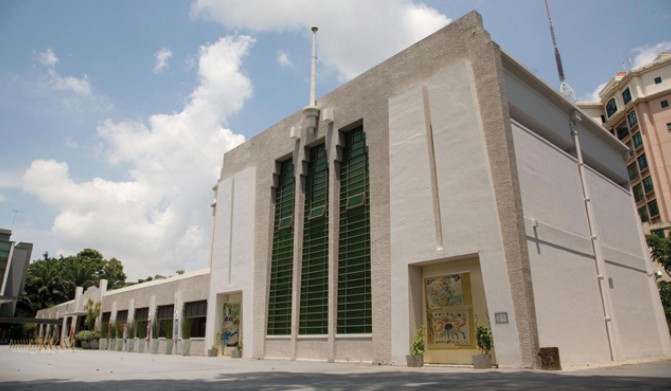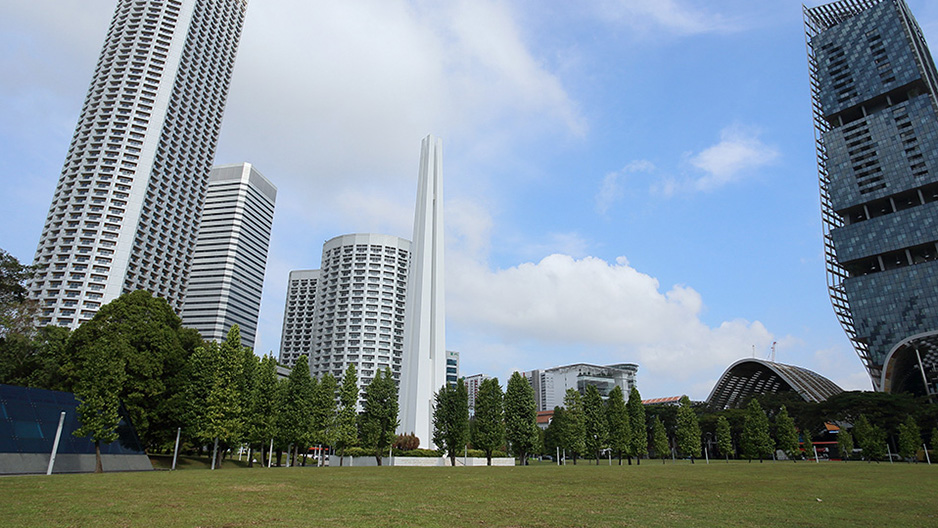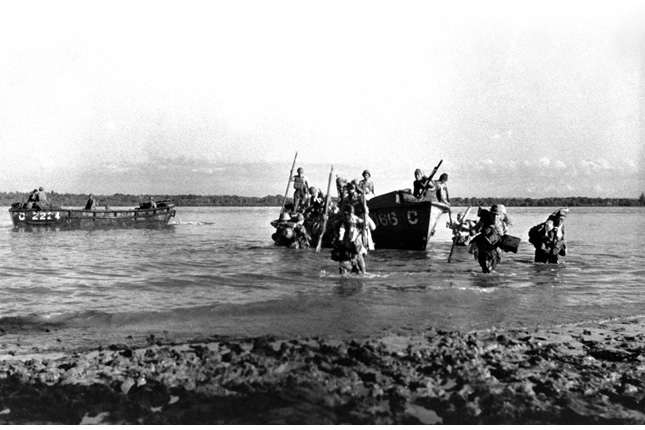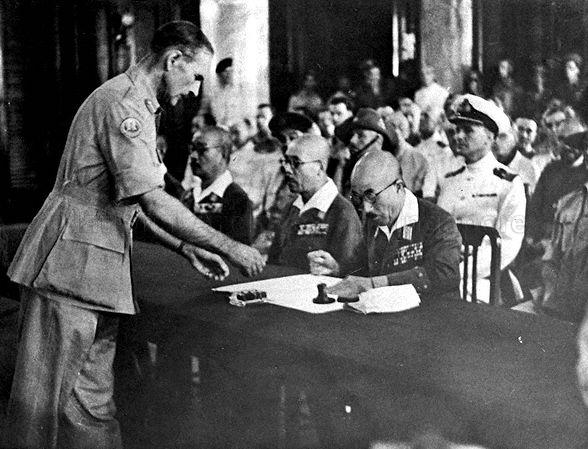

Image source: Roots.sg
Built atop a little hill, the Former Ford Factory has been a visual landmark in Bukit Timah since its completion in 1941. As Ford Motor Company’s first automobile assembly plant in Southeast Asia, it bore witness to the booming manufacturing industry in Singapore in the twentieth century. The building is also remembered as the location where the British unconditionally surrendered Singapore to the Japanese in 1942.

Image source: nlb.gov.sg
Fort Canning Bunker (The Battlebox)
Built in 1936 and completed in 1939, the Battlebox served as the headquarters for the defending Allied forces against the invading Japanese army in the final days of the Malayan Campaign (8 Dec 1941 — 15 Feb 1942).

Image source: battlebox.sg
It was here that Lieutenant-General Arthur Percival and 11 other commanders made the decision to surrender Singapore to the Japanese, resulting in possibly the greatest defeat of a British army ever in battle and the beginning of 3 ½ years of the Japanese Occupation of Singapore.

Image source: nparks.gov.sg
Civilian War Memorial at War Memorial Park
After the war, the Civilian War Memorial, also referred to as "The Chopsticks", was built to honour civilians killed during the Japanese Occupation. The four pillars of the memorial, standing at 61m, symbolise the Chinese, Malays, Indians and Eurasians who died in the war. Since the memorial was officially unveiled, commemorations, ceremonies and services have been held there every year on 15 February to remember civilians who were killed during the Japanese Occupation.
WORLD WAR 2 IN SINGAPORE

Image source: National Archives of Singapore
The first Japanese troops landed in Singapore on 8 February 1942, the day The Battle for Singapore began.
World War II in Singapore began on 8 December 1941, when Japanese planes dropped the first bombs on the island, killing 61 and injuring 133 people. The Japanese Troops than began their invasion from the north in Malaya and eventually reached the shores of Singapore on 8 February 1942.
Abstract retrieved on 12/01/2022 from roots.gov.sg

Image source: biblioasia.nlb.gov.sg
Lieutenant-General Arthur Ernest Percival (extreme right) and his party on their way to the Ford Factory in Bukit Timah to surrender Singapore to the Japanese on 15 February 1942. © IWM (HU 2781).
Winston Churchill described the fall of Singapore as "the worst disaster and largest capitulation in British history". The Japanese claimed to have taken 60,000 Imperial troops in Singapore - 16,000 British, 14,000 Australian and 32,000 Indian soldiers. Lt-Gen Percival, the British General Officer Commanding, said he had been forced to surrender when the loss of food, water, petrol and ammunition made it impossible to carry on the struggle.

Image source: The British Newspaper Archive
The Sunday Post, 1 February 1942

Image source: The British Newspaper Archive
The People, 1 February 1942
Read more in the links below:

Infographic retrieved on 12/01/2022 from pacificatrocities.org

Image source: nparks.gov.sg
Civilian War Memorial at War Memorial Park
Sook Ching was a Japanese military operation aimed at purging or eliminating anti-Japanese elements from the Chinese community in Singapore. From 21 February to 4 March 1942, Chinese males between the ages of 18 and 50 were summoned to various mass screening centres and those suspected of being anti-Japanese were executed.
After the war, the Civilian War Memorial, also referred to as "The Chopsticks", was built to honour civilians killed during the Japanese Occupation. The four pillars of the memorial, standing at 61m, symbolise the Chinese, Malays, Indians and Eurasians who died in the war. Since the memorial was officially unveiled, commemorations, ceremonies and services have been held there every year on 15 February to remember civilians who were killed during the Japanese Occupation.

Image source: National Archives Singapore
General Itagaki Signing Surrender Document
The Japanese surrendered to General Douglas MacArthur on board an American battleship, Missouri, at Tokyo Bay at 9 am on 2 September 1945 – officially ending WWII.1 Two weeks later, on 12 September 1945 at 11.10 am, local time, another Japanese surrender ceremony was held at the Municipal Building of Singapore (now known as City Hall), which was accepted by Lord Louis Mountbatten.2 It officially ended the Japanese Occupation of Southeast Asia.